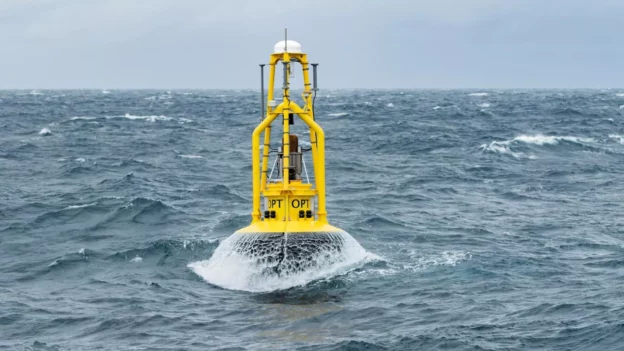The North American company Ocean Power Technologies (OPT), specialized in services, data and marine energy, is close to reaching 15 MWh in renewable energy production with its PowerBuoys series. These devices harness the power of waves to generate electricity. In addition, the recent deployment of its state-of-the-art PowerBuoy off the coast of New Jersey has significantly increased average power production by integrating solar, wind and wave energy technologies.
What has the development of marine energy projects been like?
The energy production records are derived from projects executed in various seas such as the Atlantic, Pacific, Mediterranean and North Sea. These projects have been made possible through a mix of investments from government renewable energy development programs, as well as leases and sales to companies including Eni, EGP and the Office of Naval Research. It also includes the DeepStar consortium, which includes industry giants Chevron, CNOOC, Equinor, ExxonMobil, JX Nippon, Occidental, PetroBras, Shell and Woodside.
According to OPT, the company has tested and delivered various applications such as effective solutions for anti-submarine warfare operations, intelligence, surveillance and reconnaissance tasks, as well as unmanned surface vehicle (USV) cargo and environmental monitoring.
“These results demonstrate that autonomous marine power generation is not exclusive to the research and development sector, but is also a viable commercial alternative. This allows for loading vehicles in the United States, monitoring the marine environment, including during the whale migration season, and supporting the defense and security industry.“said Philipp Stratmann, president and CEO of OPT.
OPT: Collaborations and new implementations
Finally, Ocean Power Technologies has collaborated with customers in sectors such as defense, wind energy, marine, oil and gas, and ocean sciences, with new implementations anticipated in the near future.
Wave energy is emerging as a promising and sustainable source of renewable energy. renewable energy . By harnessing the constant motion of waves, this technology not only contributes to reducing dependence on fossil fuels, but also offers lower variability compared to other renewable energies such as solar and wind, which can mean greater stability in energy production in coastal areas.
Follow us on social networks and don’t miss any of our publications!
Inspenet.com YouTube LinkedIn Facebook Instagram X
Source: marinetechnologynews
Photo: OPT

